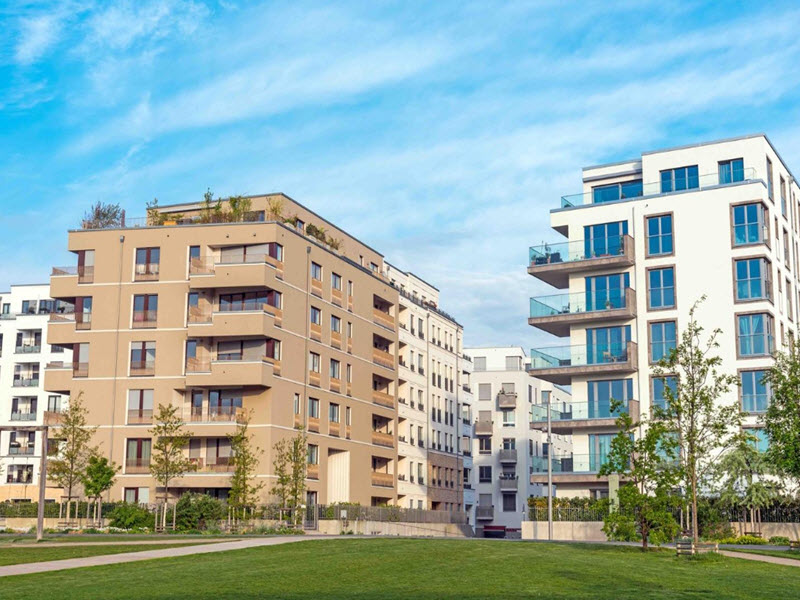The shortage of affordable accommodation, primarily rental units but also properties for purchase, has reached crisis levels in the U.S. This problem is commonly referred to as the affordable housing crisis.
According to a recent study commissioned by the National Apartment Association (NAA) and the National Multifamily Housing Council (NMHC,) no fewer than 4.3 million affordable apartments are needed by 2035.
In terms of rentals, “affordable” suggests a monthly rent of less than $1000, a price point currently in very short supply. While rents dropped early in the pandemic, partly due to residents fleeing the cities, they have since rebounded to higher levels than pre-pandemic.
The study cites the loss of 4.7 million affordable units between 2015 and 2020, resulting from decades of underbuilding, meaning sustainable building policies are urgently required.
Simultaneously, rising interest rates, supply chain issues, and labor shortages are serving to slow down construction projects, increasing the deficit.
Immigration is one primary driver of the increased need for affordable rental housing, and approximately half of potential renters are single people in low- to medium-paid employment.
Unaffordable rents in city centers or places close to their employment mean such employees are forced into long commutes or must leave the neighborhood altogether, preventing them from living close to their work and participating socially and economically in the local community.
“The lack of available housing is holding our country back. [W]e need a massive supply of new for-sale and rental homes—including millions of new apartments by 2035.” – NMHC President and CEO Doug Bibby.
The affordability crisis is being felt nationwide, but the NAA/NMHC study identifies three states where the need is strongest: California, Florida, and Texas, which will require at least 1.5 million new affordable properties by 2035.
What Are Some Solutions to the Affordable Housing Crisis?
Financial incentives are one way to encourage the development of affordable units and the conversion of existing properties. For example, California has offered hundreds of millions of dollars in incentives to help transform underutilized office space into housing.
Meanwhile, the Biden administration is attempting to address the affordability crisis by rewriting rules for the interpretation of how states can use American Rescue Plan funds – targeting those earning less than 65% of an area’s median income.
Easing financial restrictions for potential buyers would help more Americans become homeowners, simultaneously releasing existing rental units back on the market. Financial incentives can also effectively persuade developers to build more affordable multi-family units – both for rental and purchase.
“Building more homes for low- and moderate-income families and first-time homebuyers, and equipping these families with reliable and affordable financing tools so they can compete to buy these homes, is essential if we’re to solve the nation’s affordable homeownership crisis.”
– Janneke Ratcliffe, CNN.com.
Ms. Ratcliffe refers to the post-WWII period when a similarly desperate housing shortage existed and suggests using similar strategies – with reservations – to help fix the current crisis:
- Limit non-residential construction
- Temporarily remove import tariffs on lumber for construction purposes
- Enable purchasers to access housing with low down payments and extended amortization periods
These policies were reasonably successful in the post-war period; the 1950s saw 15 million new homes built, with a massive increase in the percentage of Americans who became homeowners – would similar policies work today?
The main issue today arises with strategy #3. Firstly, in the 1950s, such help was mainly received by white families, inadvertently creating racial inequality in home ownership that persists to this day.
Secondly, the current fiscal practice of increasing interest rates has the opposite effect of what was intended in strategy #3, effectively excluding many first-time buyers from the possibility of home ownership instead of enabling them.
Fortunately, there is some good news: 4.3 million affordable units constructed by 2035 should be achievable, although rising interest rates and increasing construction costs require innovative solutions.
What Does The Housing Deficit Mean for Real Estate Investors?
For those interested in investing in commercial or residential real estate, the current housing deficit offers an attractive opportunity with reliable long-term ROI and capital appreciation.
Multi-family apartment buildings designed for the rental market will be in high demand for many years, and savvy investors may want to consider adding such developments to their portfolio.

